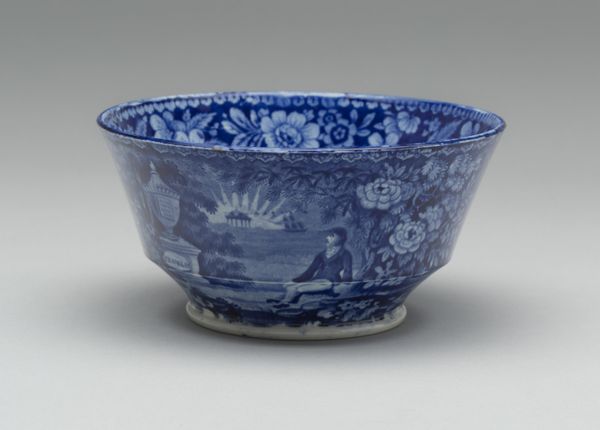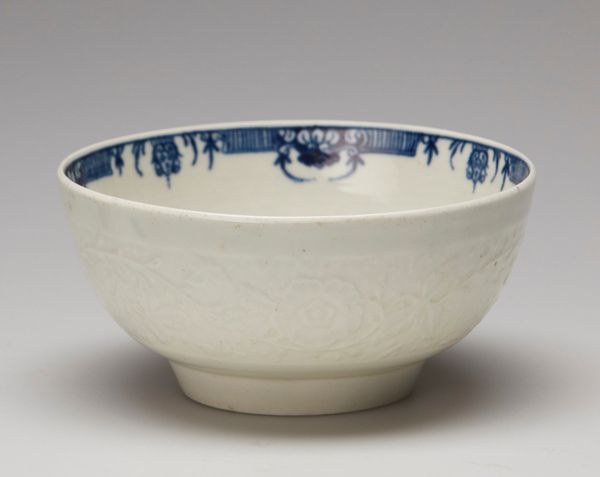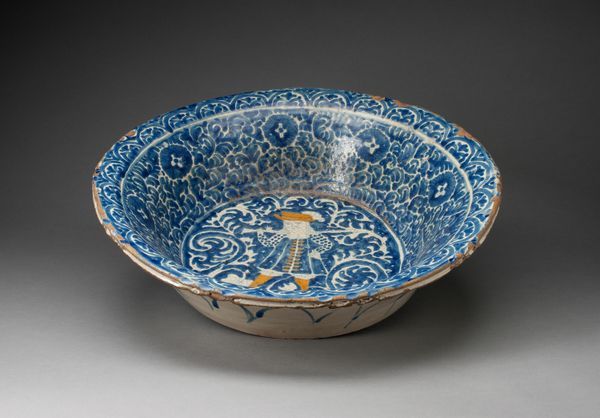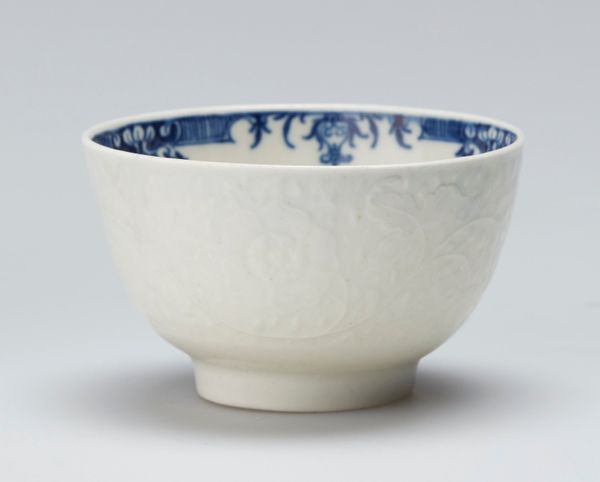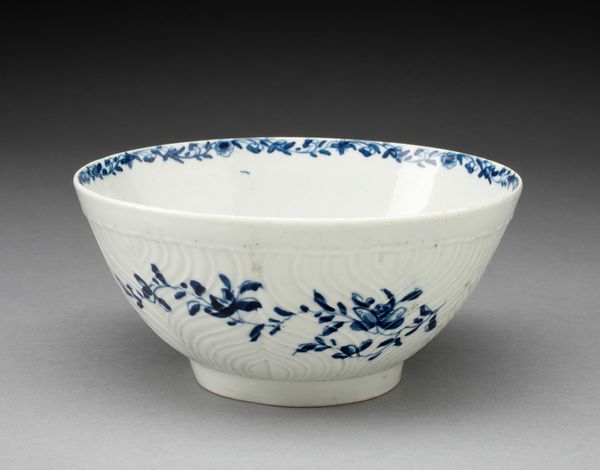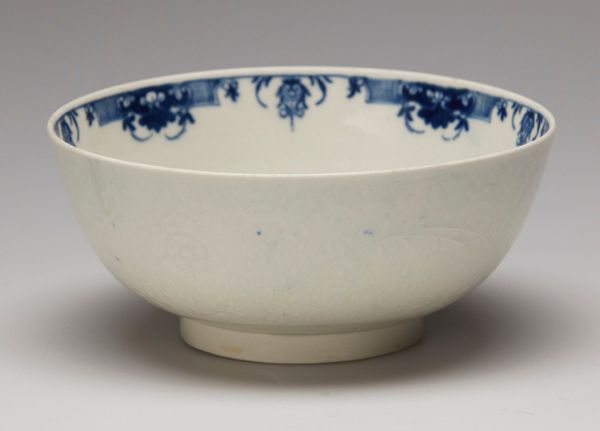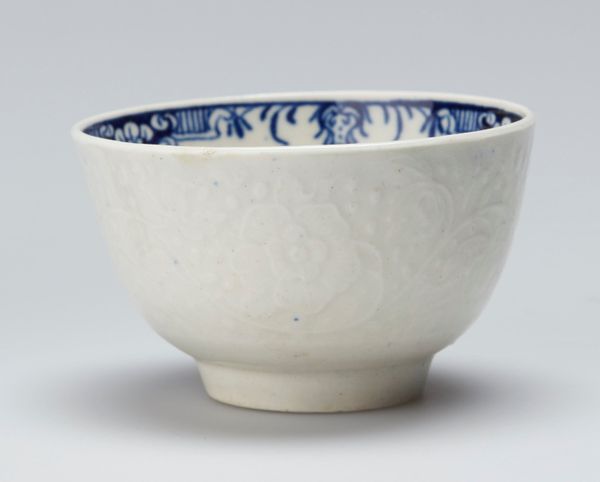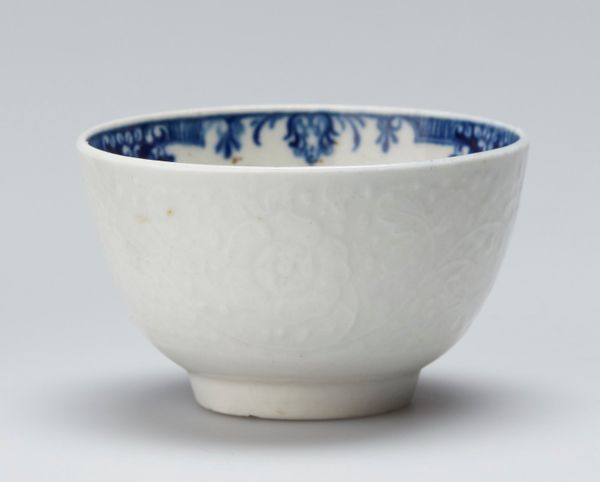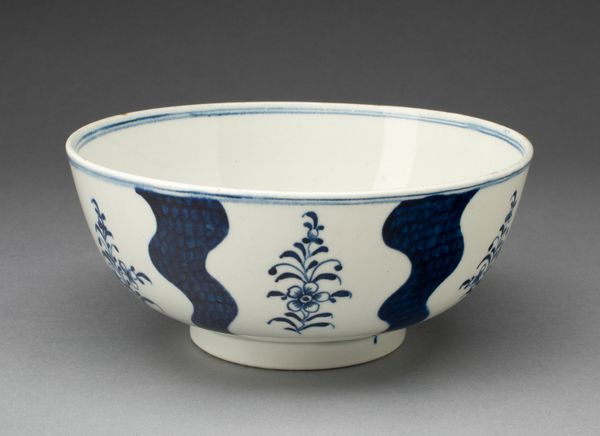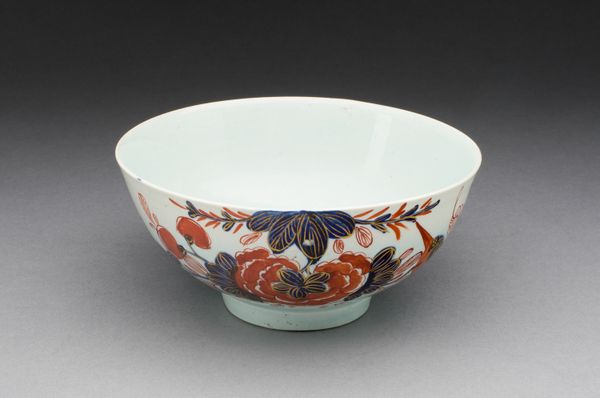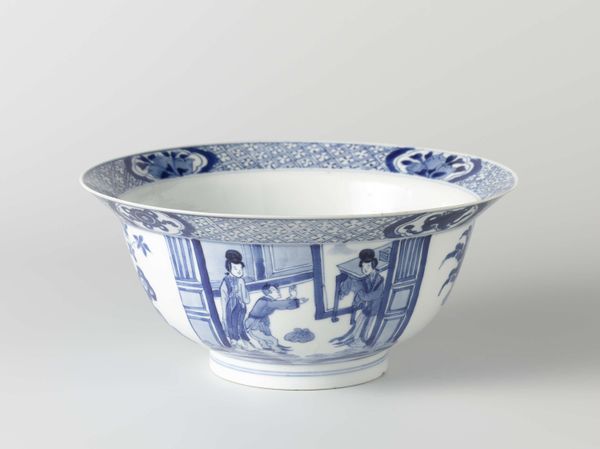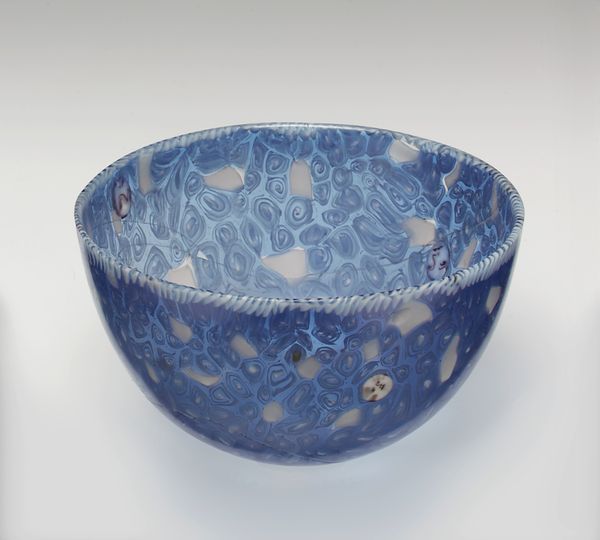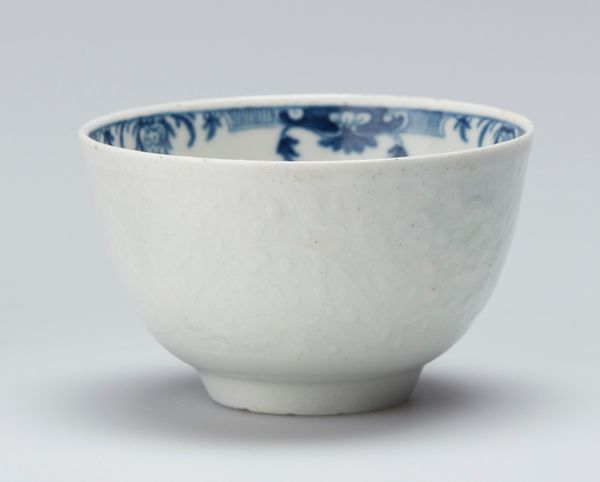
ceramic, earthenware
#
baroque
#
ceramic
#
earthenware
#
stoneware
#
ceramic
Dimensions: H. 6 1/2 in. (16.5 cm); Diam. 20 1/4 in. (51.4 cm)
Copyright: Public Domain
Editor: Here we have an earthenware basin dating back to between 1660 and 1680. I find the contrast between the simple white background and the intricate blue designs quite striking. What do you see in this piece? Curator: This basin, beyond its immediate visual appeal, offers us a glimpse into the complex social history of hygiene and domesticity. Consider the materiality: earthenware, a common material, yet decorated in a style emulating the prized blue and white porcelain from Asia. What does this imitation tell us about status and desire in that period? About trade routes? Editor: That’s interesting; I hadn't thought about the economic implications. Curator: Exactly! The craftsmanship and its emulation speak to aspirations and access. Furthermore, think about its function. A basin implies washing, cleanliness. How was hygiene perceived then, across different classes and genders? How might its presence have impacted or been shaped by cultural notions of gender and propriety? Editor: So you're saying the object’s existence and design reflect broader social inequalities of the time? Curator: Precisely. And its survival into the present allows us to engage with these histories critically. Consider also how the floral motifs might connect to societal notions of femininity or to the colonial networks through which such decorative styles traveled. What conversations does it start? Editor: It’s made me think a lot about everyday objects holding hidden histories of class and trade. Curator: Indeed! Art isn't just about aesthetics; it's a tangible connection to past cultures, raising essential questions about power, identity, and exchange.
Comments
No comments
Be the first to comment and join the conversation on the ultimate creative platform.
